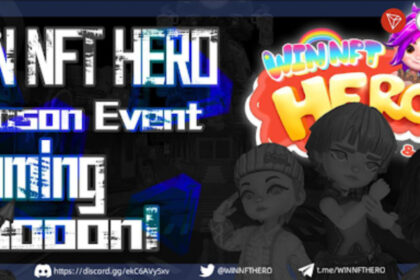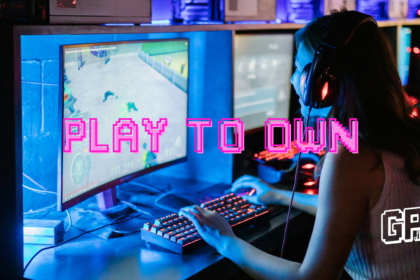In recent years, there has been a significant buzz surrounding the concept of the metaverse. With the rise of Web3 technology, the metaverse is becoming a hot topic of discussion within the gaming industry and beyond.
This article aims to explore the metaverse and its implications for the future of gaming in a Web3 world. From its definition and characteristics to the potential it holds for immersive gaming experiences, we will delve into the exciting possibilities that lie ahead.
What is the Metaverse?
The metaverse refers to a virtual universe, a collective space where users can interact with each other and the digital environment in real-time. It is a three-dimensional, immersive world that blurs the boundaries between the physical and digital realms. Unlike traditional online platforms, the metaverse aims to create a persistent and interconnected virtual space that can be accessed by anyone, anytime, from anywhere.
The Characteristics of the Metaverse
The metaverse possesses several key characteristics that distinguish it from other online platforms. Firstly, it is a shared space where users can engage with one another, collaborating or competing in various activities. Secondly, it is a user-generated environment, allowing participants to create and customize their virtual identities, objects, and experiences. Thirdly, it is a persistent world, meaning that actions and changes made by users have lasting effects on the metaverse.
The Evolution of Web3 Gaming
Web3 gaming represents a paradigm shift in the gaming industry, enabled by blockchain technology and decentralized networks. It introduces the concept of true ownership and scarcity of in-game assets, providing players with greater control and the ability to monetize their virtual possessions. With the advent of non-fungible tokens (NFTs) and decentralized marketplaces, Web3 gaming has laid the foundation for a new era of player-driven economies.
The Intersection of the Metaverse and Web3 Gaming
The metaverse and Web3 gaming share a symbiotic relationship. The metaverse acts as the overarching framework within which Web3 games can thrive. Web3 gaming, on the other hand, enriches the metaverse by introducing interactive and immersive experiences. By combining the principles of the metaverse with Web3 technology, developers can create vibrant ecosystems where players can explore, compete, and collaborate with each other while retaining ownership and control over their in-game assets.
Building and Navigating the Metaverse
The creation of the metaverse requires collaboration among various stakeholders, including game developers, blockchain engineers, and virtual world architects. Together, they lay the groundwork for interconnected virtual experiences, building platforms and protocols that facilitate seamless navigation and interoperability. As the metaverse expands, users will be able to traverse different virtual environments, accessing a multitude of games and experiences within a unified ecosystem.
The Potential of Immersive Experiences
One of the most exciting aspects of the metaverse is its potential to deliver immersive experiences. Through virtual reality (VR) and augmented reality (AR) technologies, users can enter a digital realm that engages multiple senses, creating a truly captivating and realistic environment. From exploring fantastical landscapes to participating in epic battles, the metaverse has the power to transport players into entirely new worlds, offering unprecedented levels of immersion and escapism.
Embracing Decentralization and Ownership
Web3 gaming brings the concept of decentralization to the forefront, ensuring that players have ownership and control over their virtual assets. Through the use of blockchain technology and smart contracts, players can verify the authenticity and provenance of their in-game items, preventing fraud and ensuring secure transactions. Moreover, players can trade their assets freely on decentralized marketplaces, creating vibrant economies within the metaverse.
Challenges and Limitations of the Metaverse
While the metaverse holds tremendous potential, it also faces various challenges and limitations. Technical hurdles, such as scalability and interoperability, need to be overcome to ensure a seamless user experience. Additionally, issues surrounding privacy, security, and governance must be addressed to maintain user trust and protect against malicious activities. As the metaverse evolves, these challenges will need to be tackled collectively to unlock its full potential.
The Future of Web3 Gaming
The future of Web3 gaming is undeniably intertwined with the metaverse. As technology advances and adoption grows, we can expect a proliferation of immersive and interconnected gaming experiences. Virtual worlds will become increasingly realistic, offering players unprecedented levels of engagement and social interaction. The integration of blockchain technology will continue to drive player empowerment, allowing gamers to truly own and monetize their virtual assets. With the metaverse and Web3 gaming converging, the possibilities are limitless.
Planetary Metaverse
One of the metavers already doing well in the market is Planetary. It is a very friendly and entertaining place that is also a social network platform. A new vision and ( virtual) reality between the struggling Meta (Fcebook) and Twitter.
The metaverse represents a paradigm shift in the way we interact with digital environments. As Web3 gaming continues to gain traction, the metaverse offers a compelling vision for the future of gaming. By combining immersive experiences, decentralized ownership, and interconnected virtual worlds, the metaverse has the potential to revolutionize the gaming industry. As technology advances and barriers are overcome, we are on the cusp of a new era where players can explore, create, and thrive in a digital universe unlike anything we’ve seen before.









